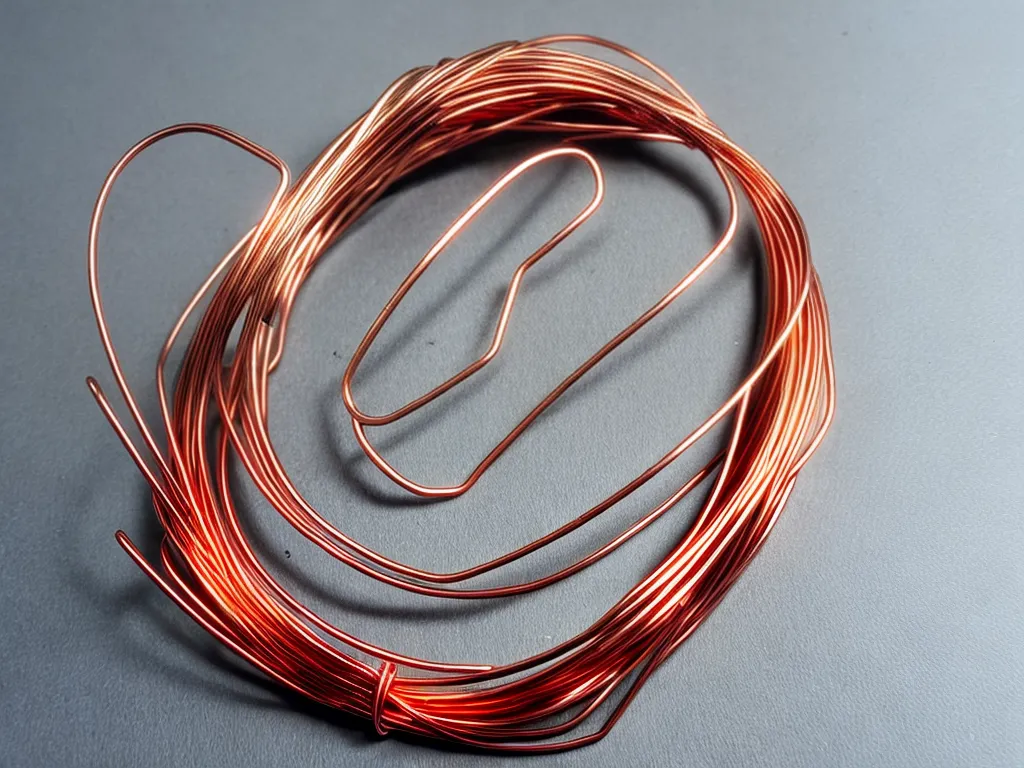
How to Use Copper Wire for Beginners
What is Copper Wire?
Copper wire is a conductor made of copper metal. It is composed of small copper strands twisted or braided together to increase flexibility. Copper is an excellent conductor of electricity due to its high conductivity and ductility. This makes copper wire ideal for various electrical applications.
Some key properties of copper wire:
-
Highly conductive - Copper has the second highest conductivity after silver. This allows efficient transmission of electricity.
-
Flexible - Can be bent and shaped easily without breaking. Stranded copper wires are more flexible than solid core.
-
Durable - Copper is resistant to corrosion and weathering. Properly insulated copper wire can last for decades.
-
Good thermal conductivity - Copper can efficiently transfer heat. This helps dissipate heat in electrical systems.
-
Available in different gauges - The gauge refers to the wire diameter. Common gauges are 16, 14, 12 which decrease in size. Choose gauge based on current load.
Common Uses of Copper Wire
Copper wire has many uses due to its high conductivity and flexibility. Here are some of the most common applications:
Electrical Wiring
One of the most well-known uses of copper wire is for electrical wiring in buildings and appliances. Insulated copper wires are used to connect electrical components like outlets, switches, and circuit breakers. Thicker gauge wires are used for high current applications.
Motors and Transformers
Copper wire windings are found in electric motors and transformers. The windings allow transmission of power and electricity conversion. Stranded copper wires have the flexibility for winding around cores.
Power Transmission
Thick copper cables transmit electricity from power plants to substations in the electrical grid. Overhead power lines also utilize bare copper conductors on transmission towers.
Appliance Wiring
Home and commercial appliances like microwaves, refrigerators, and air conditioners use insulated copper wiring internally for components. Appliance cords also have stranded copper conductors.
Electrical Grounding
Bare copper wire is commonly used to provide electrical grounding in homes and buildings. This protects from electric shock by providing a safe path for fault currents.
Crafts and Jewelry Making
With its malleability and aesthetic appeal, copper wire can be used for various craft projects like sculpture, wrapping, basket weaving and making jewelry pieces. Enameled copper wires come in many colors.
Choosing the Right Gauge and Type
When selecting copper wire, consider the gauge, insulation type, and whether stranded or solid core is needed:
-
Gauge - Match the wire gauge to the expected electrical load and current rating. Thicker wire for high power applications.
-
Insulation - Insulation like PVC plastic prevents dangerous electrical contact. High temp insulation for motors/appliances.
-
Stranded vs Solid - Stranded is more flexible but solid core is better for tight spaces.
-
Bare vs Insulated - Bare copper wire only for grounding or outdoor power transmission. Insulation needed for indoor wiring.
Also choose wire based on application - building wire for housing, magnet wire for transformers, appliance wire for repairs etc.
Working Safely with Copper Wire
Follow these safety guidelines when using copper wire:
-
Wear protective gloves when handling copper wire to avoid cuts. The ends can be sharp.
-
Turn power OFF at the breaker when working on electrical wiring projects. Prevent electrocution accidents.
-
Use proper wire strippers to remove insulation. Never use teeth or a knife which can damage the wire.
-
Avoid kinks and bends in the wire which can break individual strands. This reduces conductivity.
-
Do not overload circuits beyond copper wire ampacity to prevent fire hazard.
-
Follow local electrical codes for wire insulation, conduit use, and circuit protection.
Step-by-Step Guide for Beginners
Here is a step-by-step overview of working with copper wire for the first time:
1. Select the Right Gauge and Type
Determine your power needs and choose the appropriate wire size. Also decide insulation type and whether you need stranded or single core.
2. Gather the Proper Tools
Essential tools include wire strippers, cable cutters, screwdrivers, electrical tape, and wire nuts. Safety gear like gloves is also necessary.
3. Strip the Wire Ends Properly
Use wire strippers to carefully remove just enough insulation from the ends - roughly 0.5 inch of bare wire. Avoid nicking the copper.
4. Make Secure Electrical Connections
For solid core wire, twist ends together securely and tighten with wire nuts. For stranded, use crimp connectors.
5. Insulate Exposed Wiring
Use electrical tape to cover any exposed copper wiring to prevent dangerous contact. Tape entire connection.
6. Route and Clamp the Wires
Run wiring neatly through walls/appliances and use staples or clamps to firmly secure them in place.
7. Test and Troubleshoot Your Project
Verify wires are connected properly and circuit is working as expected. Use a multimeter to check for problems.
Conclusion
Working with copper wire allows beginners to undertake many DIY electrical projects safely. Choose the right gauge and insulation for your specific application. Follow good wiring practices and safety precautions. With proper techniques, copper wire can provide reliable conductivity for decades.